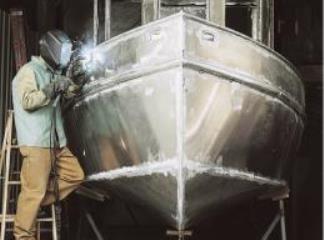An official website of the United States government
 United States Department of Labor
United States Department of Labor

This occupational group includes engine assemblers, structural metal fabricators and fitters, bakers, butchers and meat cutters, meat packers, computer-controlled machine tool operators, forging machine setters, machinists, pourers and casters, tool and die makers, printing press operators, upholsters, furniture finishers, model maters, gas plant operators, tire builders, etchers, and engravers.
The qualifications that workers need to use judgment, make decisions, interact with others, and adapt to changes in jobs.
In 2024, more than basic people skills were required for 22.5 percent of production workers, and basic people skills were required for 77.5 percent.
| Requirement | Yes | No |
|---|---|---|
|
Adaptability: Work schedule variability |
63.6 | 36.4 |
|
Pace: Pause control |
39.7 | 60.3 |
|
Working around crowds |
<0.5 | >99.5 |
|
Telework |
<0.5 | >99.5 |
|
Work review: Supervising others |
9.2 | 90.8 |
|
Work review: Presence of supervisor |
85.5 | 14.5 |
|
Source: U.S. Bureau of Labor Statistics, Occupational Requirements Survey |
||
The minimum level of formal education required, credentials necessary, on-the-job training, and prior work experience necessary for average performance in jobs.
In 2024, credentials were required for 12.5 percent of production workers. Prior work experience was required for 36.9 percent and on-the-job training was required for 87.2 percent.
No minimum education was required for 48.1 percent of production workers and a high school diploma was required for 47.5 percent.
The various tangible or concrete hazards or difficulties that are in the vicinity of where jobs’ critical tasks are performed.
In 2024, 95.7 percent of production workers were not exposed to extreme cold, and 88.5 percent were not exposed to extreme heat. Wetness was not present for 79.3 percent, 99.1 percent were not exposed to heavy vibrations, and 87.2 percent were not exposed to the outdoors.
Refer to the physical activities required to perform tasks in jobs. The presence and, in some cases, duration of these activities are published.
In 2024, reaching at or below the shoulder was required for 89.3 percent of production workers and was not required for 10.7 percent. For 6.0 percent of workers, reaching at or below the shoulder was seldom performed, for 52.0 percent reaching at or below the shoulder occurred occasionally, 29.8 percent frequently, and for 1.6 percent reaching at or below the shoulder occurred constantly.
Performing work in low postures was required for 67.0 percent of production workers and was not required for 33.0 percent.
The choice to sit or stand when performing critical tasks was available to 10.4 percent of production workers. On average, workers spent 15.8 percent of the workday sitting and 84.2 percent of the workday standing.
| Requirement | Yes | No |
|---|---|---|
|
Choice of sitting or standing |
10.4 | 89.6 |
|
Driving |
12.6 | 87.4 |
|
Climbing structure-related ramps or stairs |
17.0 | 83.0 |
|
Source: U.S. Bureau of Labor Statistics, Occupational Requirements Survey |
||